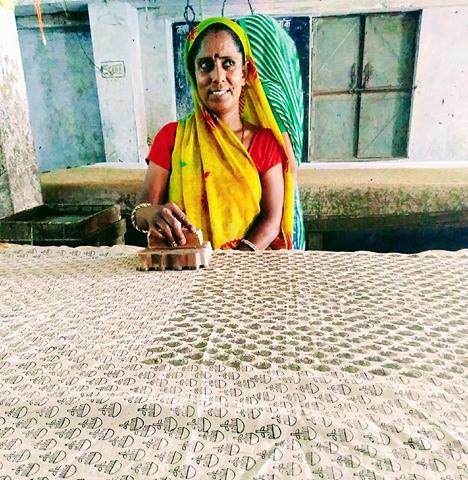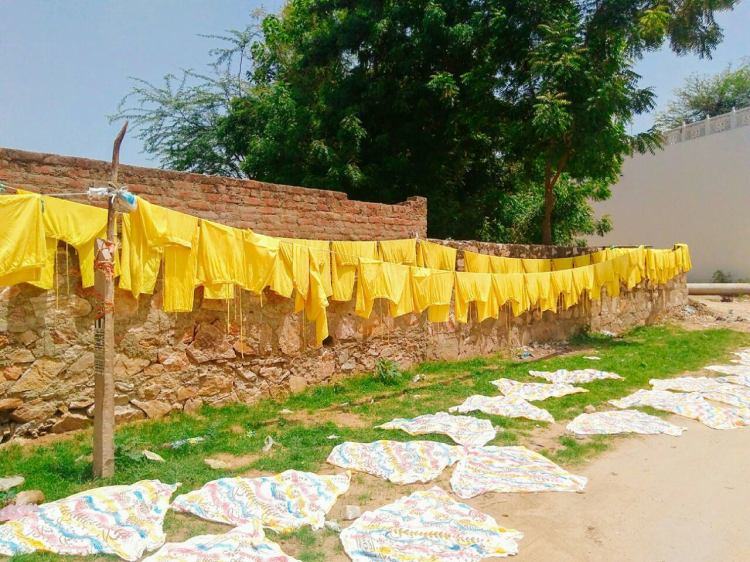
Bagru Print is an art of block printing, famous all over India for their exquisite bed sheets, dupattas and sarees. It's a form of block printing done with the help of 100% natural dyes and a surprising technique of Mud Resistance. People of 'Gokul' SHG are located in the heart of Bagru and are proudly carrying on this piece of Indian heritage on their shoulders. I happen to meet them as a part of my field visits to borrowers of Apani Sahkari Sewa Samiti, one of Milaap's field partner.

Suman Chippa, a member of the group and an excellent printer, tactfully explains how mud is used in printing as it resists the stamped part from dyeing in any colour. The mud, often mixed with 'gond' (natural gum), clay and water is prepared rigorous mixing it by foot. After being stamped, the wet mud is covered with sawdust and then dyed. The printers make the dyes themselves too using naturally occurring substance such as indigo for blue.

The prints and the colours are fabulous and commendable. The famous Bagru print can be seen on cotton, synthetic cloth and Malmal cloth too, usually consisting of flowery grand traditional motifs. Each block costs around Rs. 1000 to be made. The loan money is used to buy the blocks, cloth pieces and raw material for making the dyes. The garments or cloth pieces are dried on the roads and a well-connected transport system helps them with their timely deliveries.

Ayodhya, another member expresses her disappointment over the latest tax system that rendered them without work for days as the orders stopped coming in, “We used to have 7 tables running to meet the extensive demands of the market, but due to the latest tax system, we have just 3 left.” With hope in her eyes, she reconciles herself enough to talk further about how the people of ‘Chippa’ caste (jaati) are printers by profession, and maybe that’s why she enjoys it so much while being able to save for her children. I think about that for a while before moving forward. Most women here have not formally learnt the skill, rather have acquired their expertise through repetitive practice.
 As a message to their lenders the group thanks them all, the women want loan amounts to be increased for SHGs because they feel they can handle bigger loans now, they feel much more credible all of them beam with self-confidence. They are quite happy with the loans, and usually don’t have any problem managing the monthly instalments, until more recently. The visit concluded with me buying 2 of their beautiful printed dupattas and gathering a lot of learning from the relentlessly determined women who have built the generations, one stamp at a time.
As a message to their lenders the group thanks them all, the women want loan amounts to be increased for SHGs because they feel they can handle bigger loans now, they feel much more credible all of them beam with self-confidence. They are quite happy with the loans, and usually don’t have any problem managing the monthly instalments, until more recently. The visit concluded with me buying 2 of their beautiful printed dupattas and gathering a lot of learning from the relentlessly determined women who have built the generations, one stamp at a time.







